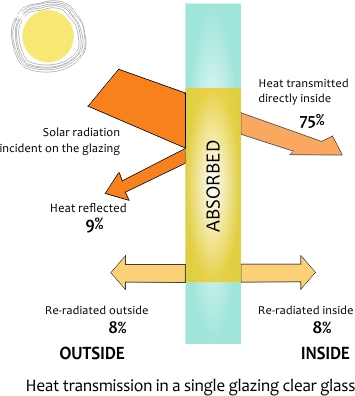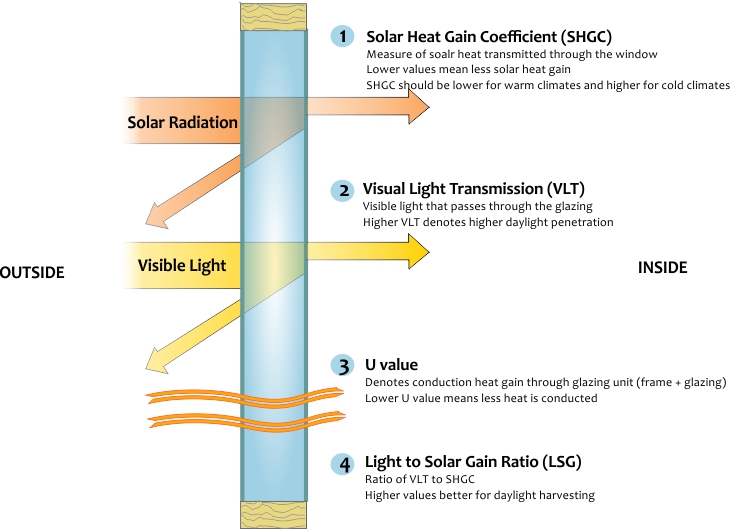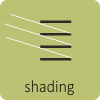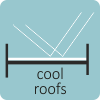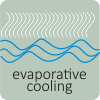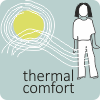Fenestrations (windows, skylights, & other openings in a building etc.) allow daylight and the prevailing wind inside the building when needed.
However, solar radiation that can penetrate through these fenestrations, especially windows, can lead to considerable heat gain. Glazing in windows traps the heat inside the space. Window glass allows short wave infra-red radiation from sun to pass through easily, but is very resistant to passage of long wave radiations emitted from objects inside the building that have heated from the solar radiation. Resultant temperature inside the building can thus be even greater than outside temperature if fenestration systems are not designed carefully. From NZEB design perspective, building fenestrations can affect lighting and air-conditioning loads considerably.
Methods to reduce heat gain through windows are:
- Orientation and size
- Glazing
- Internal shading devices (blinds, curtains)
- External shading devices
Fenestrations also influence daylight harvesting potential by reducing lighting loads without compromising on visual and thermal comfort of building occupants.
Location, sizing and glazing of windows can be used judiciously to reducing cooling load, and resultantly, smaller building cooling systems. Achieving a balance between daylight penetration and heat gain requires a careful calibration between visual and heat transmission qualities of glazing, and the orientation and sizing of opening.
Solar radiation intensity is minimum on north facing openings or walls both with respect to quantum and duration, followed by south facing facades. East and west facing openings (or walls) receive large amount of solar radiation throughout the year.
Architects and decision makers can control heat gain and loss through prudent design of fenestrations with appropriate placement, and glazing.

